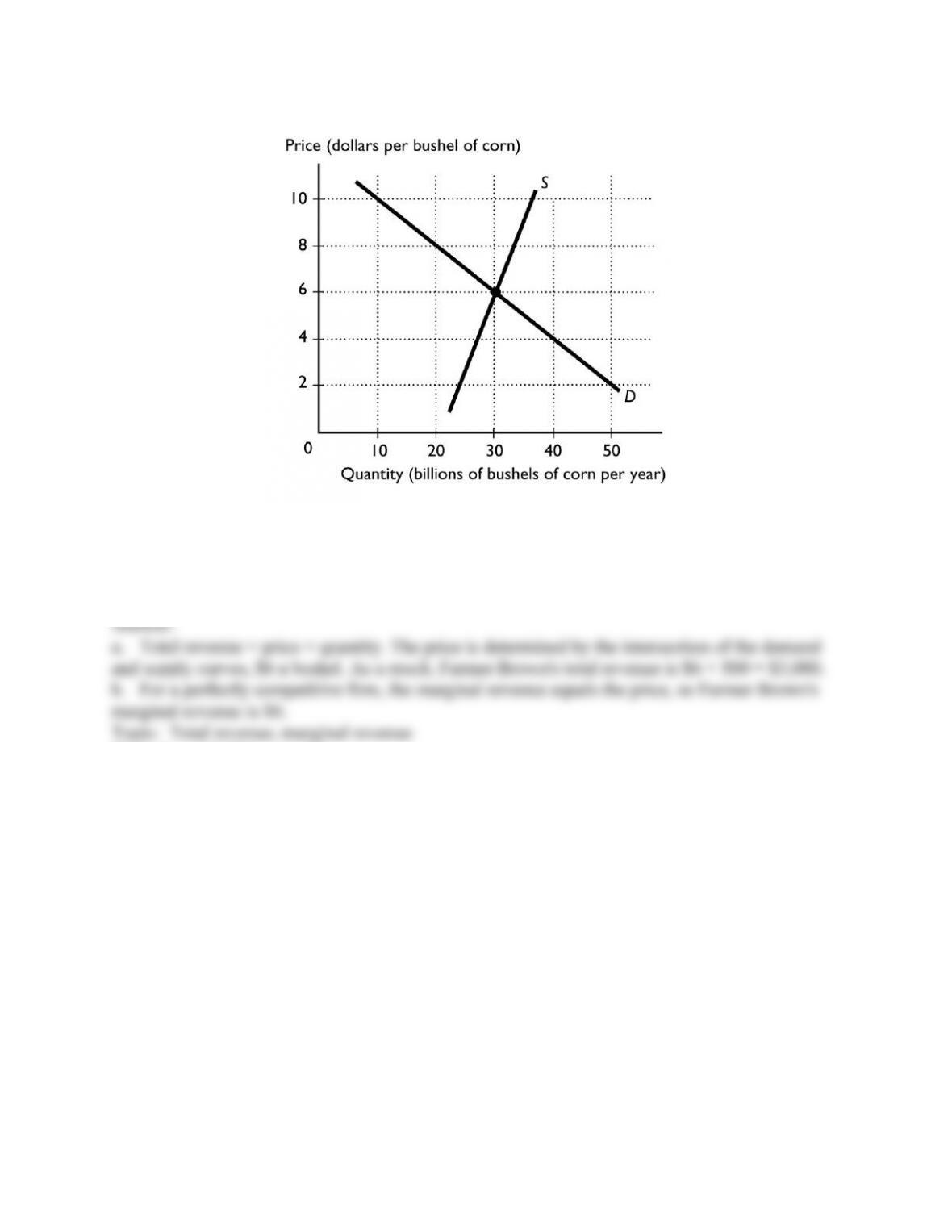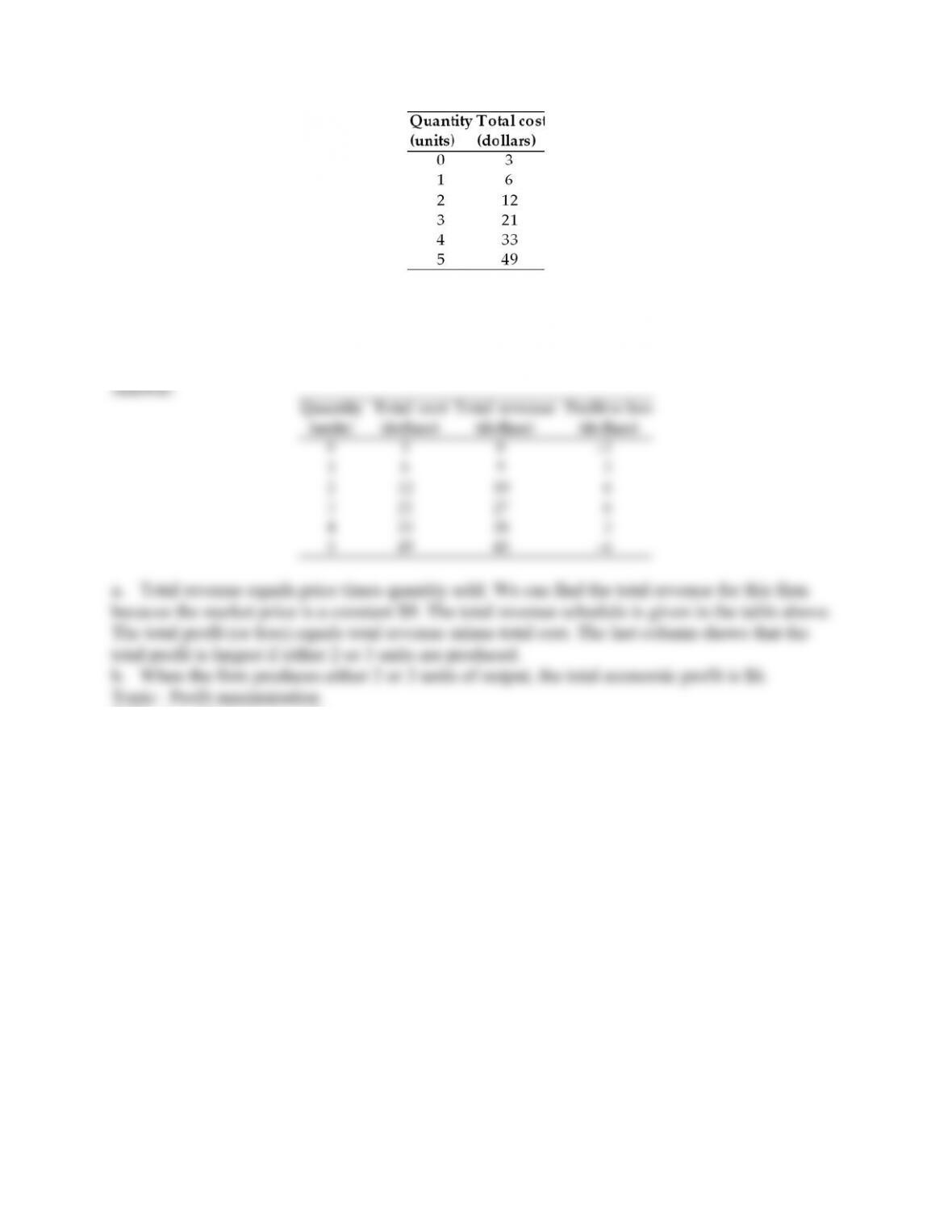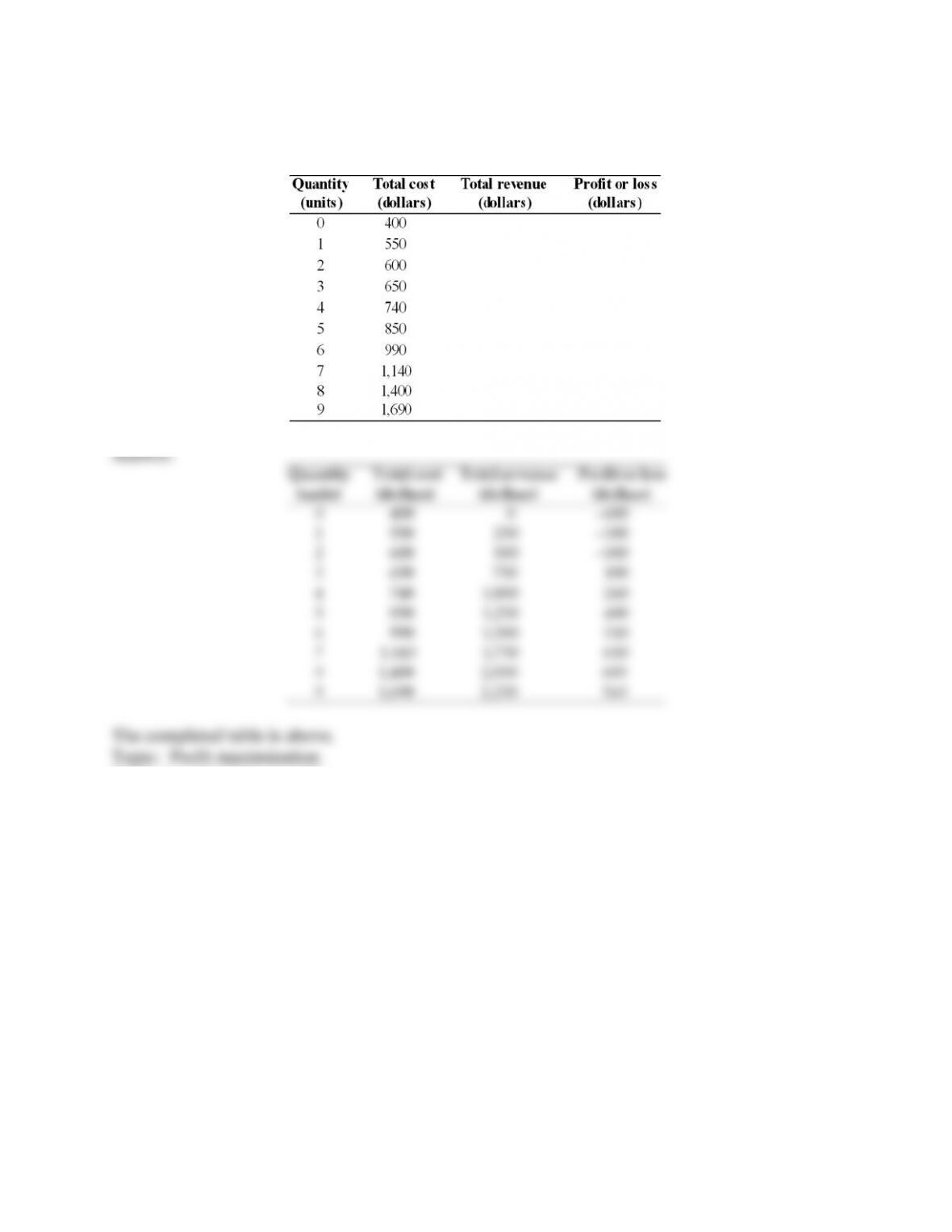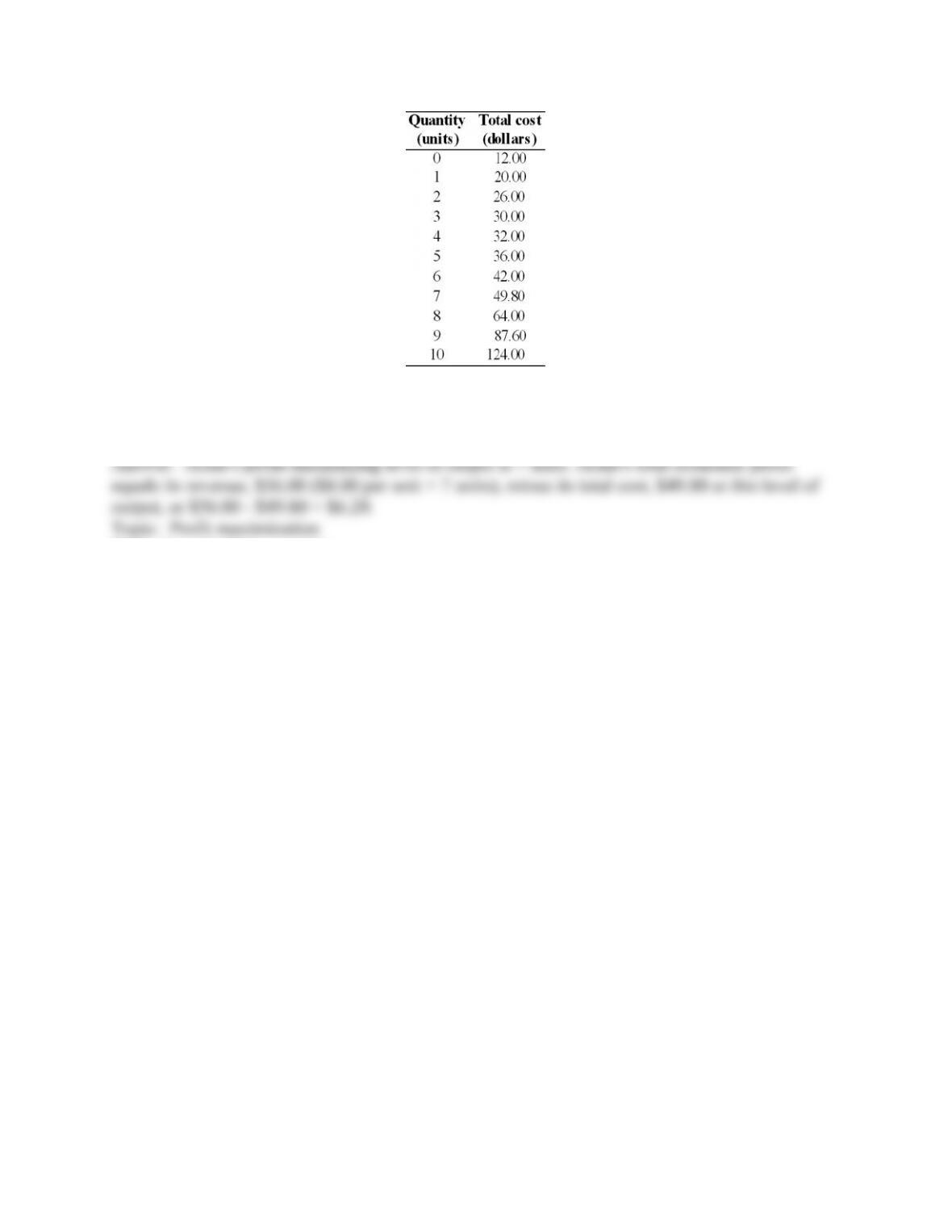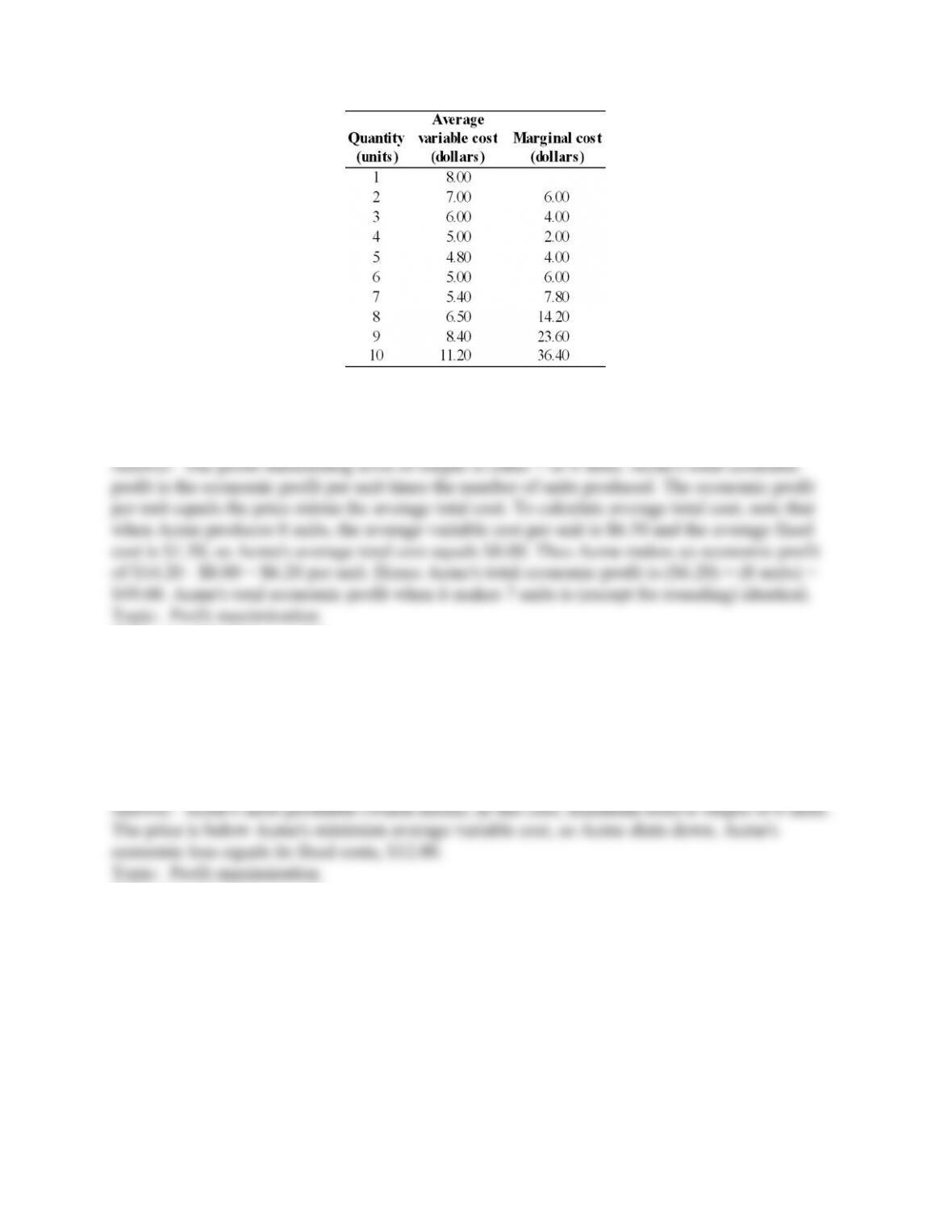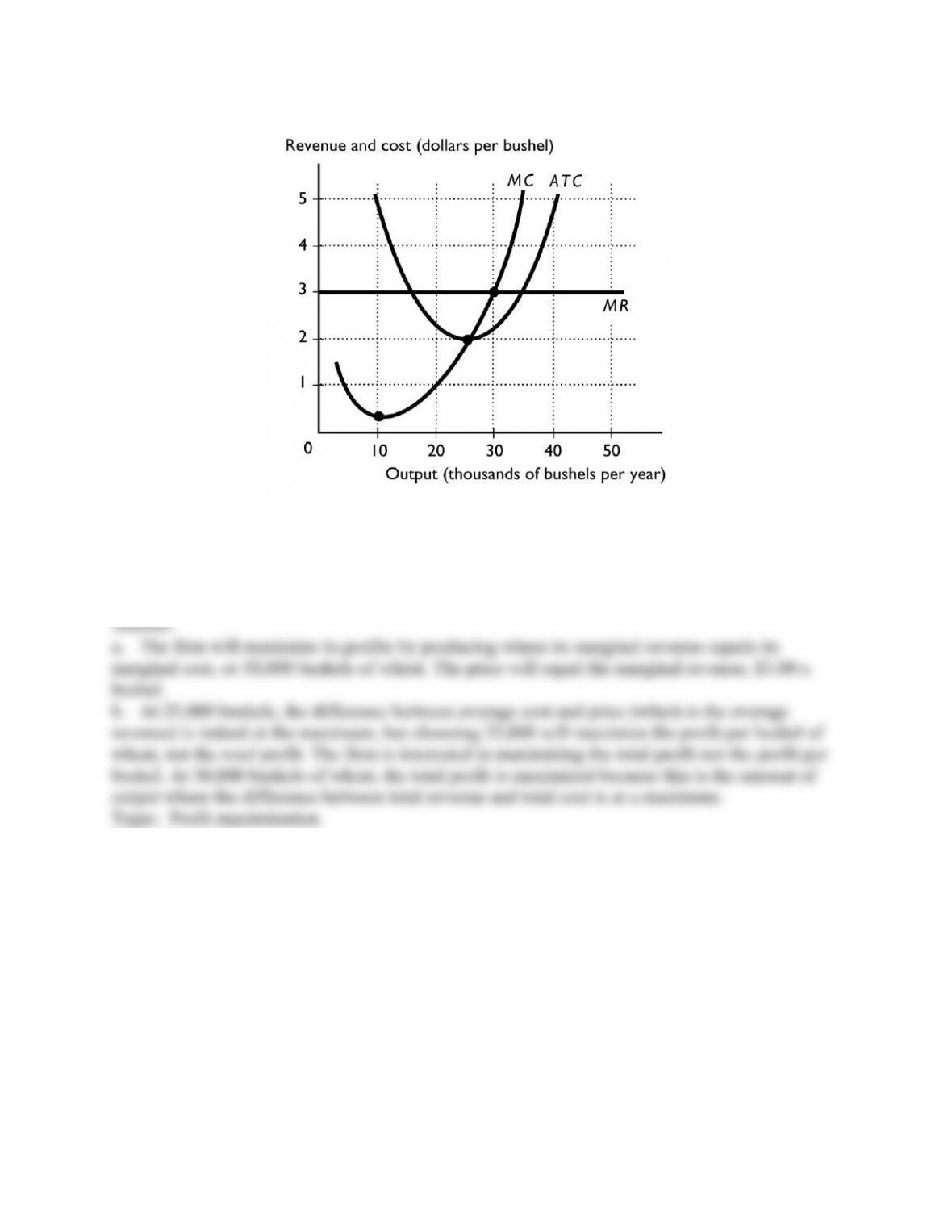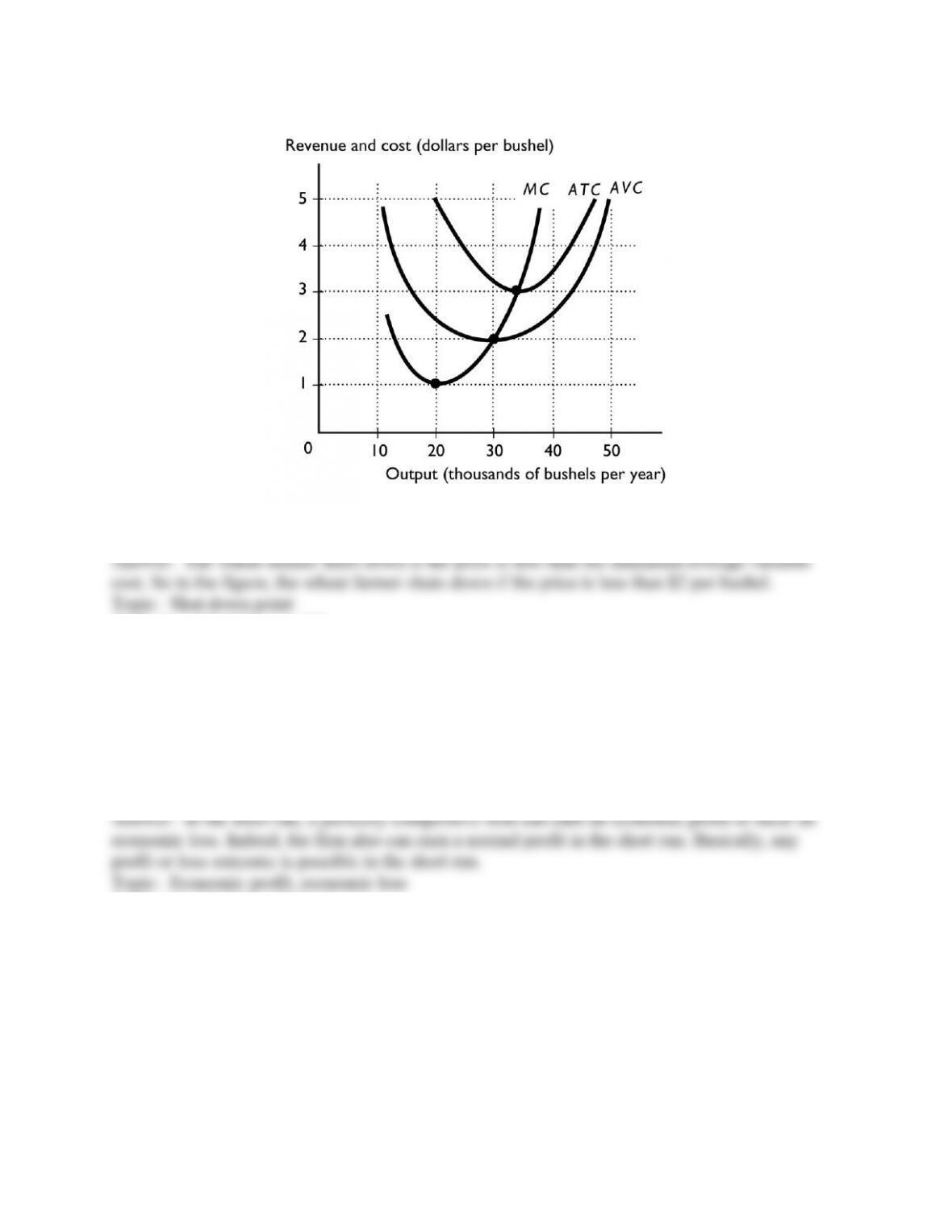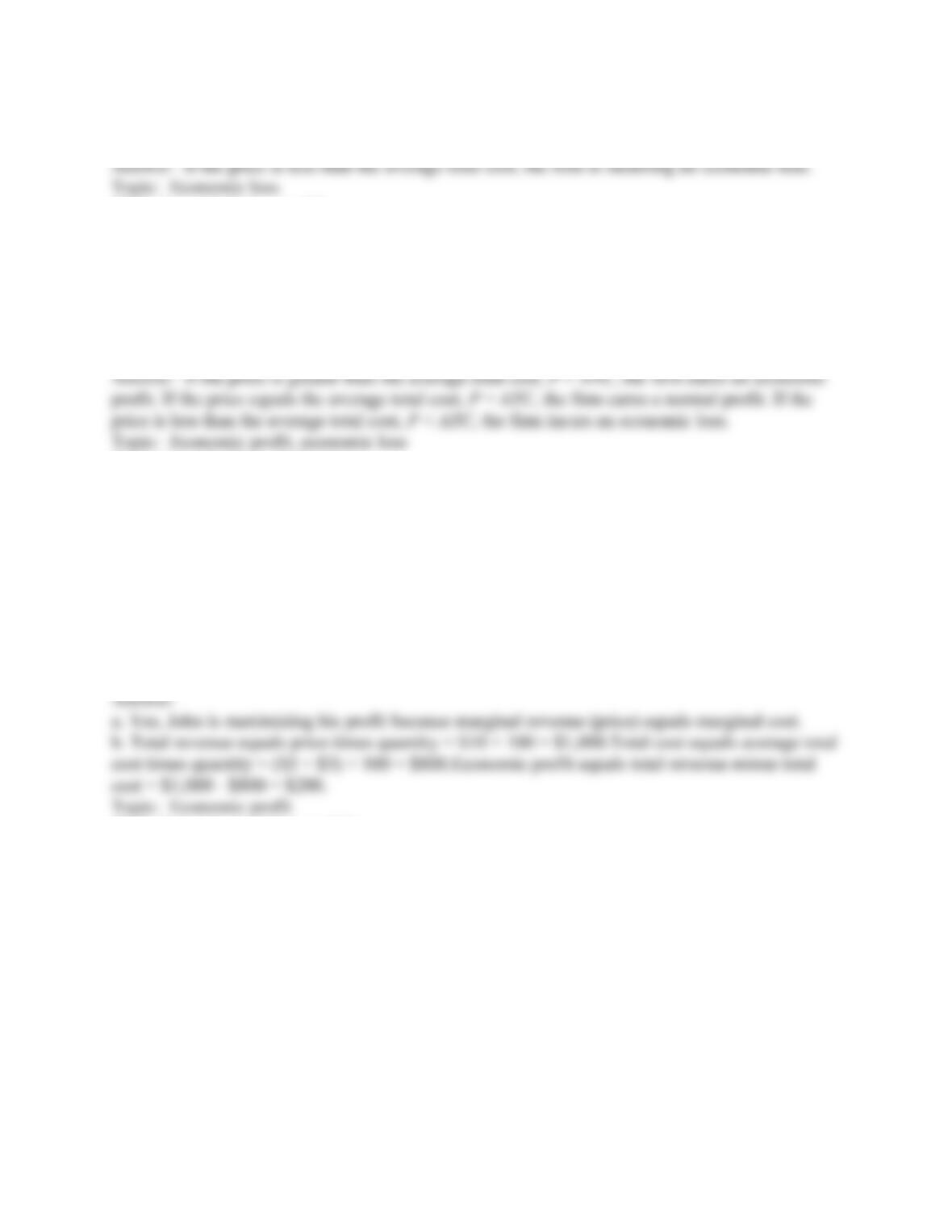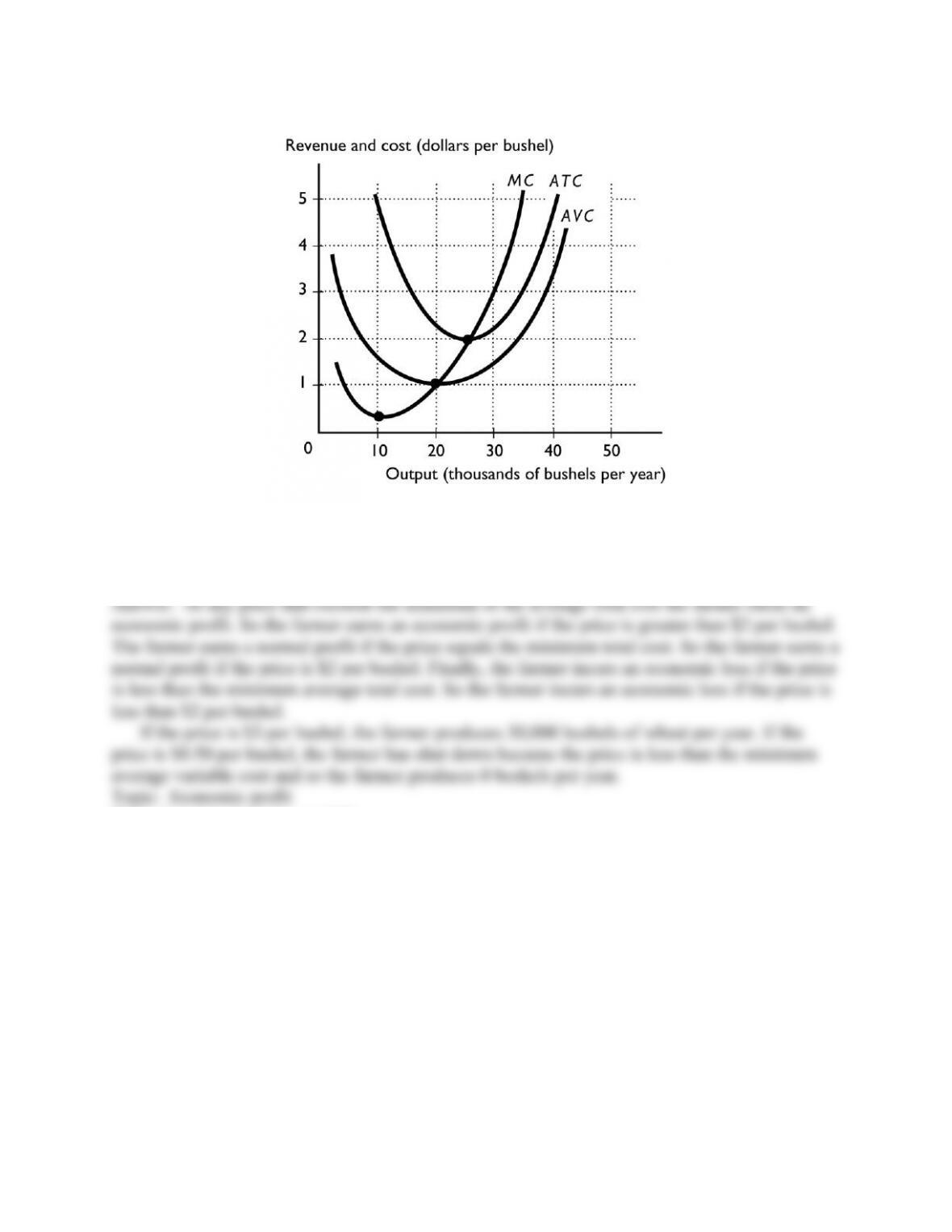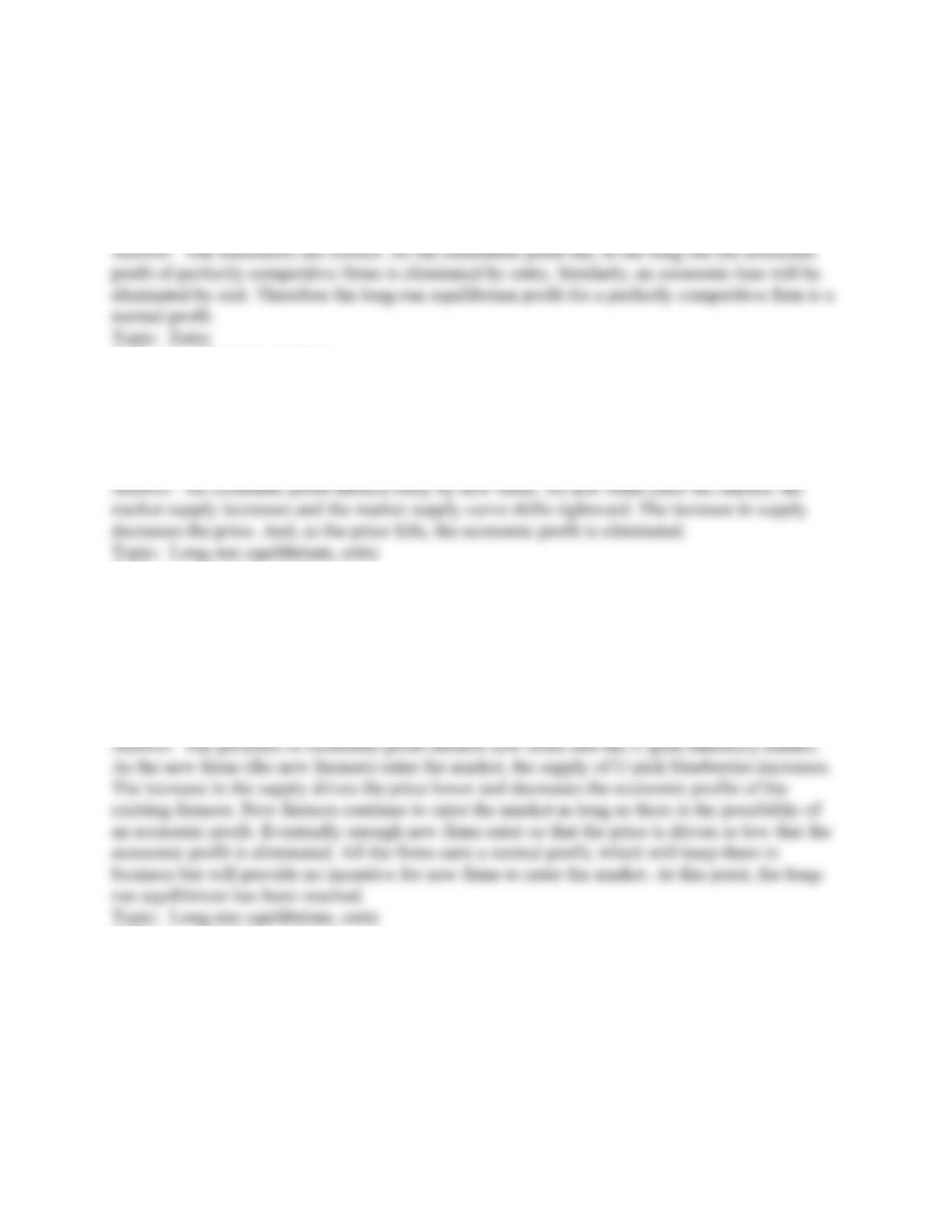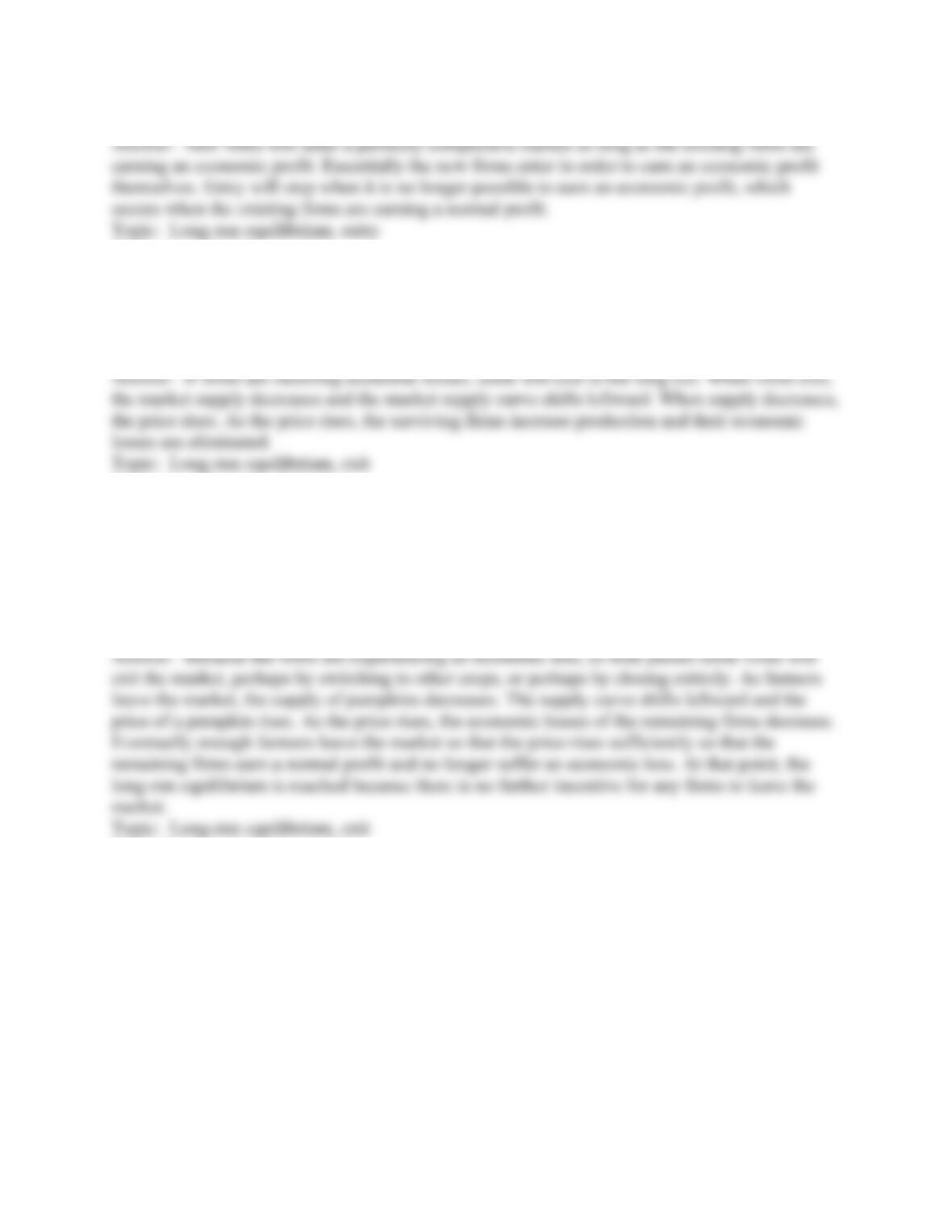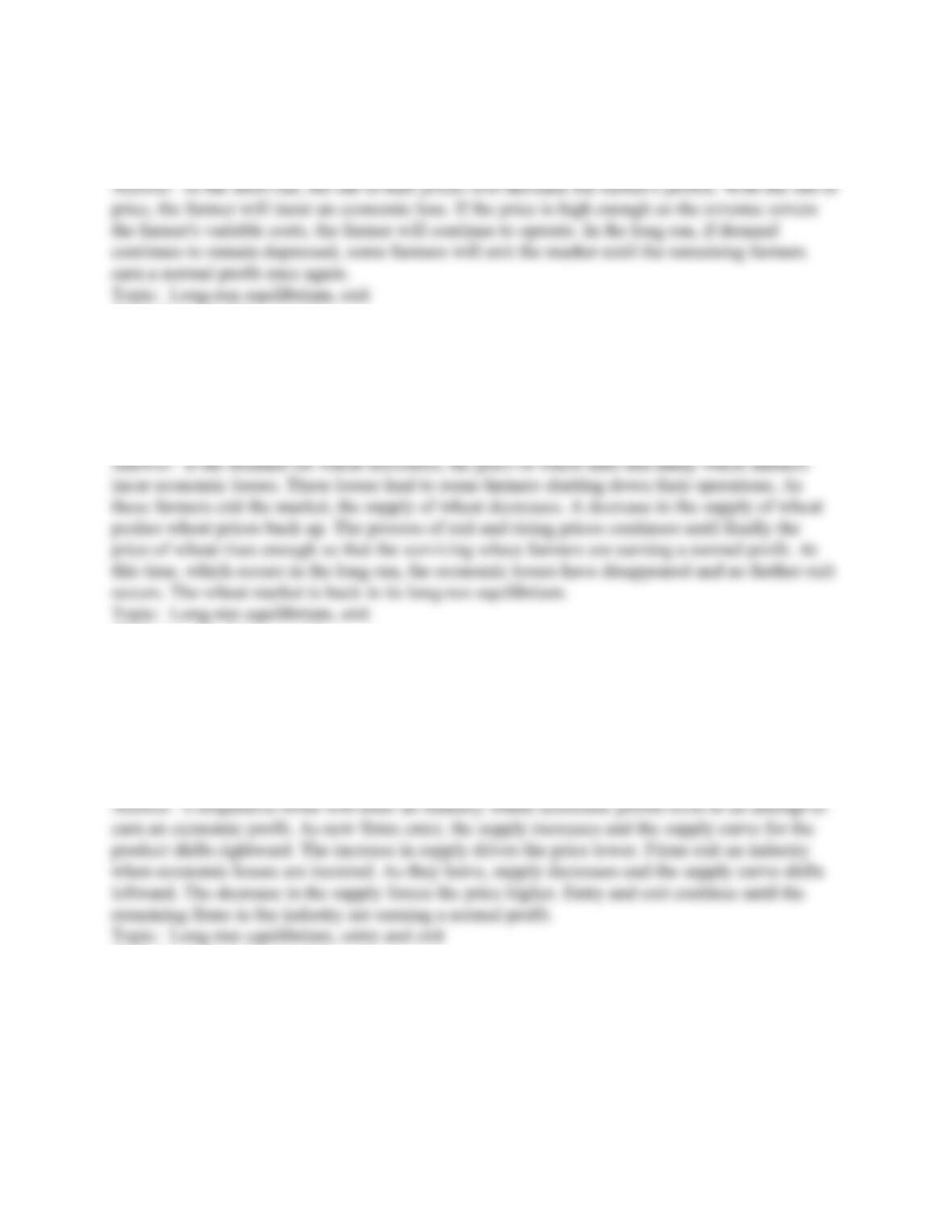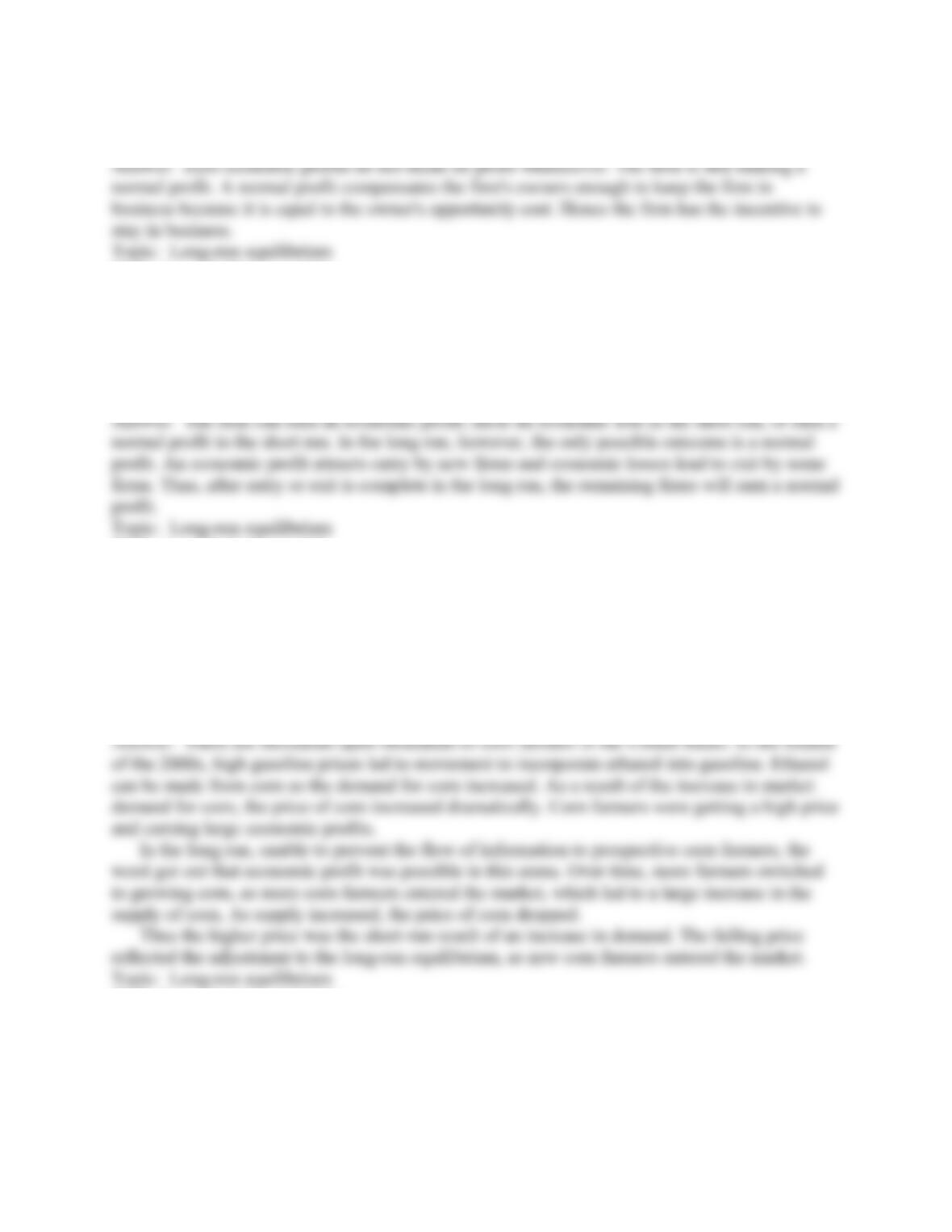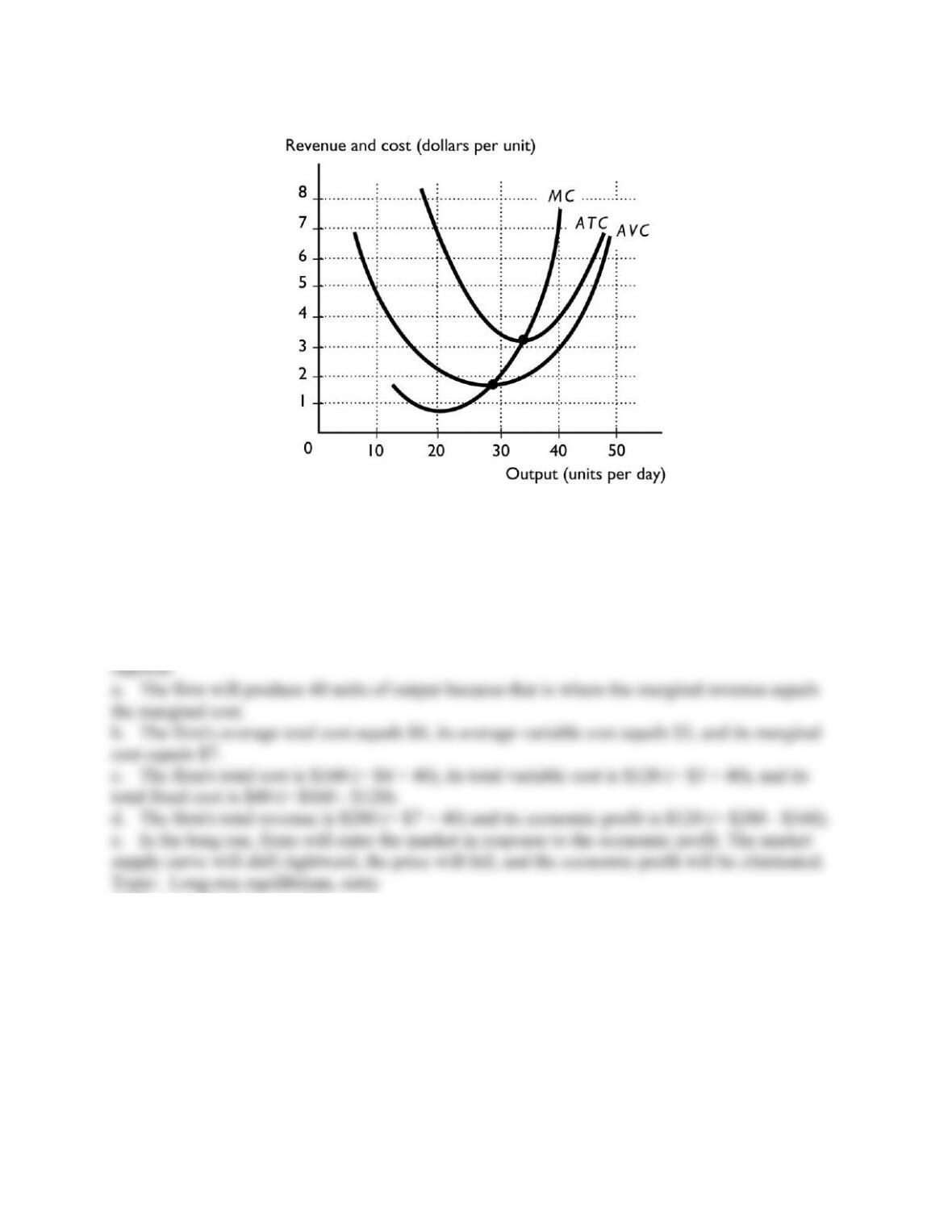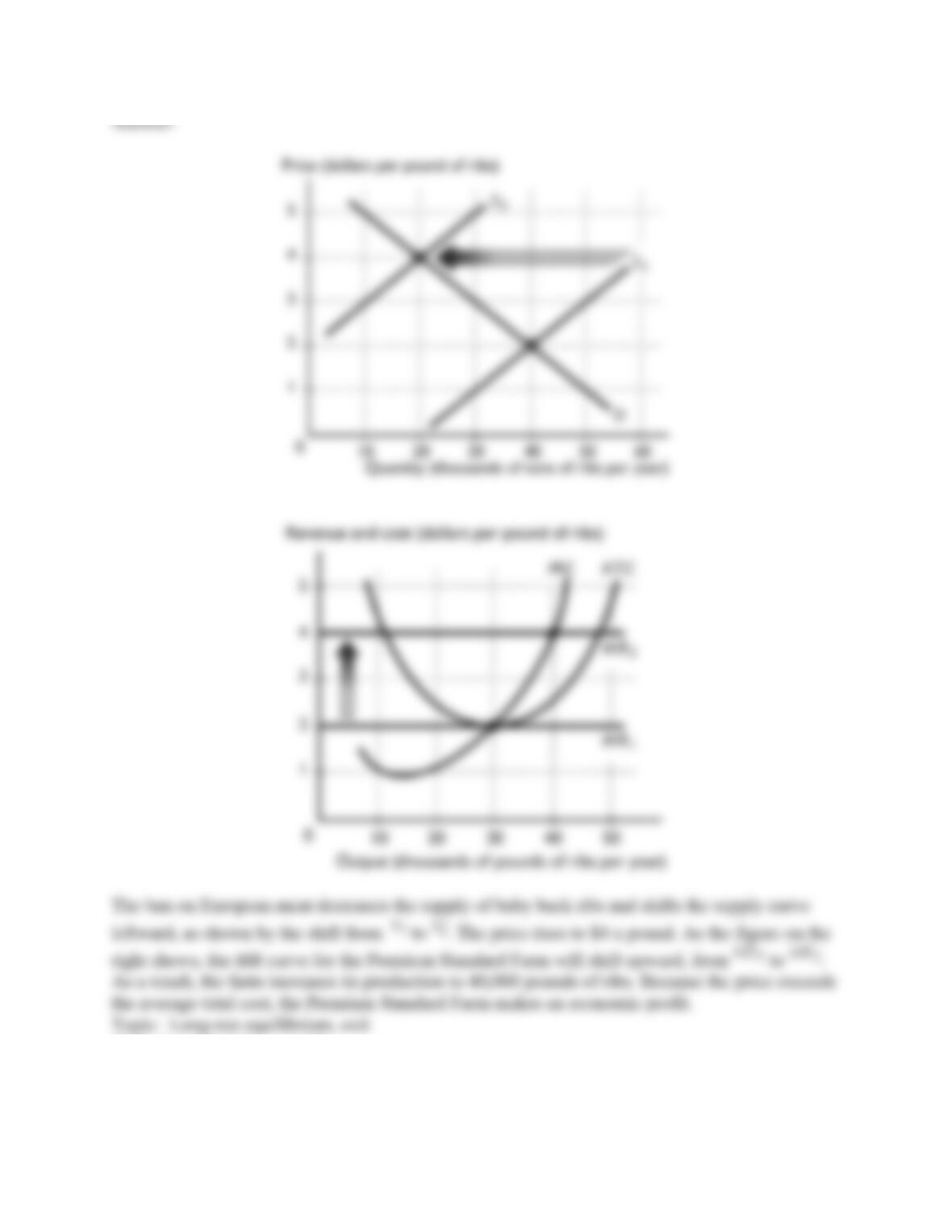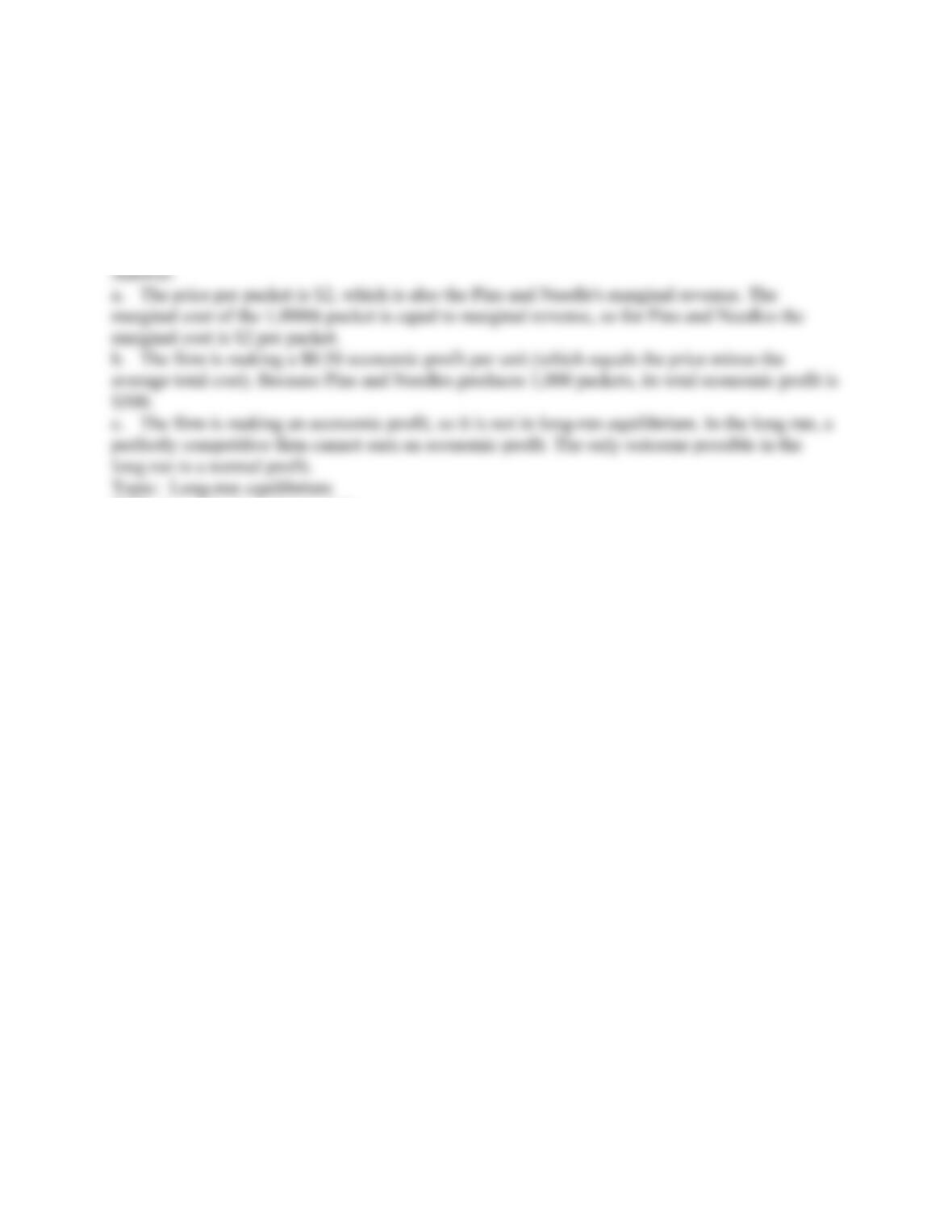67
Copyright © 2011 Pearson Education, Inc.
33) When a firm adopts new technology, generally its
A) cost curves shift upward.
B) cost curves shift downward.
C) cost curves are unaffected.
D) supply curve shifts leftward.
E) production permanently decreases.
Skill: Level 3: Using models
Section: Checkpoint 14.3
Author: SB
AACSB: Reflective thinking
34) In a market undergoing technological change, firms that
A) adopt the new technology temporarily incur an economic loss.
B) adopt the new technology temporarily earn an economic profit.
C) do not adopt the new technology temporarily earn an economic profit.
D) do not adopt the new technology increase their market share.
E) do not adopt the new technology continue to earn a normal profit.
Skill: Level 3: Using models
Section: Checkpoint 14.3
Author: SB
AACSB: Reflective thinking
35) If the technology associated with producing fiber-optic cable continues to advance, over time
the cost of producing fiber-optic cable will
A) decrease, firms that use the new technology will earn an economic profit, and in the long run
new firms will enter the market.
B) decrease, firms that use the new technology will incur an economic loss, and in the long run
some firms will exit the industry.
C) increase, firms that use the new technology will earn an economic profit, and in the long run
new firms will enter the market.
D) increase, firms that use the new technology will incur an economic loss, and in the long run
some firms will exit the industry.
E) decrease, firms that do not use the new technology will earn an economic profit, and in the
long run new firms will enter the market.
Skill: Level 2: Using definitions
Section: Checkpoint 14.3
Author: JC
AACSB: Reflective thinking

























































































